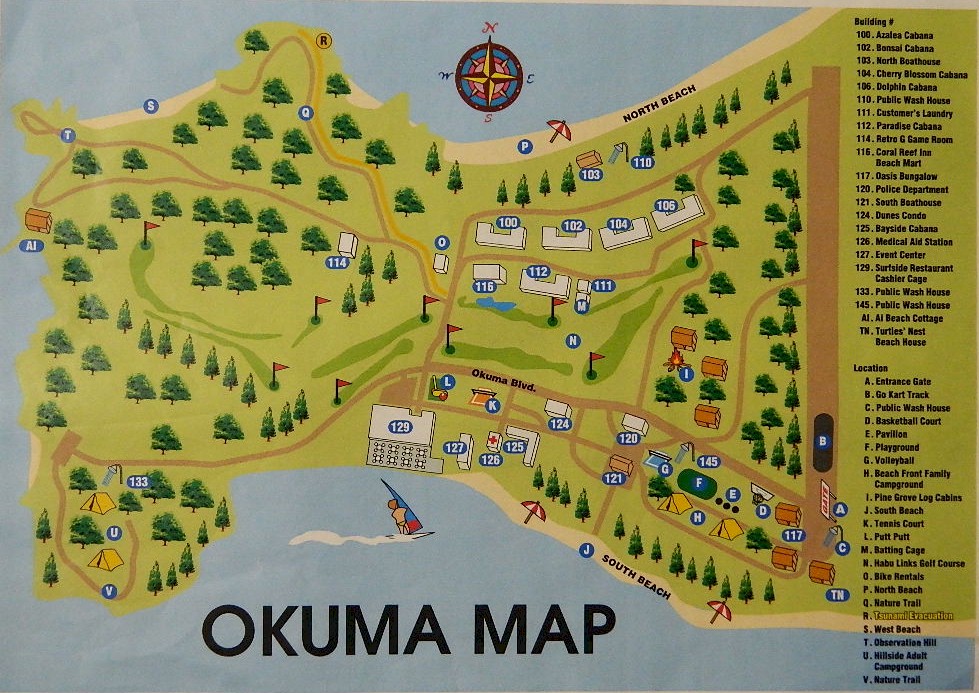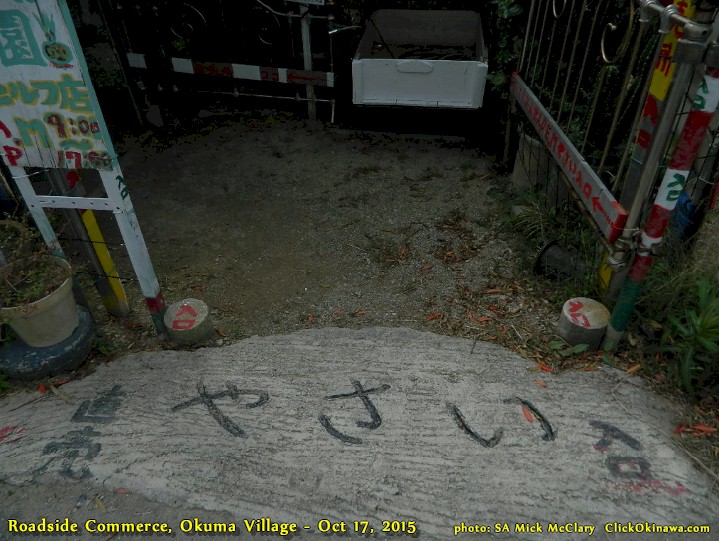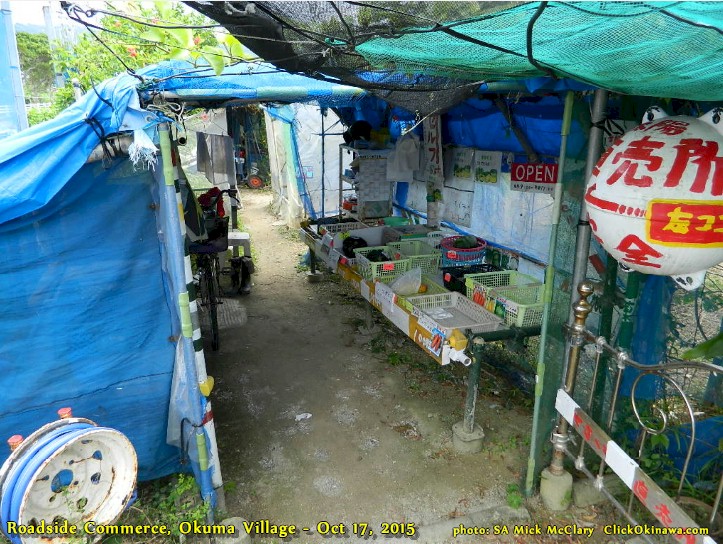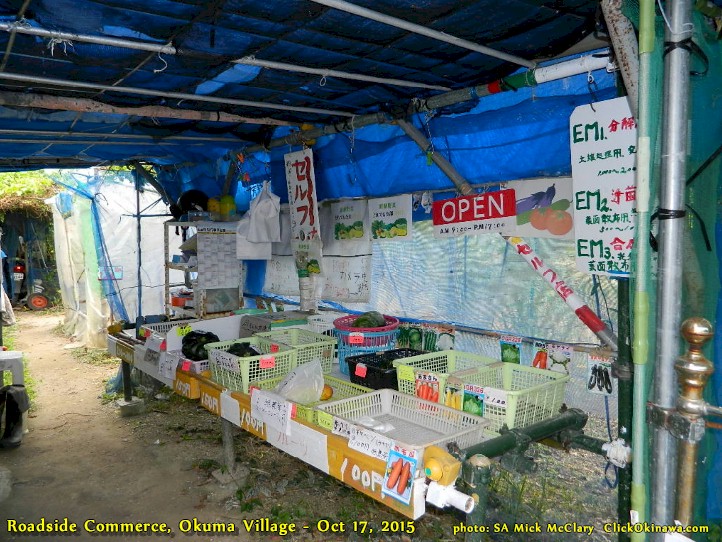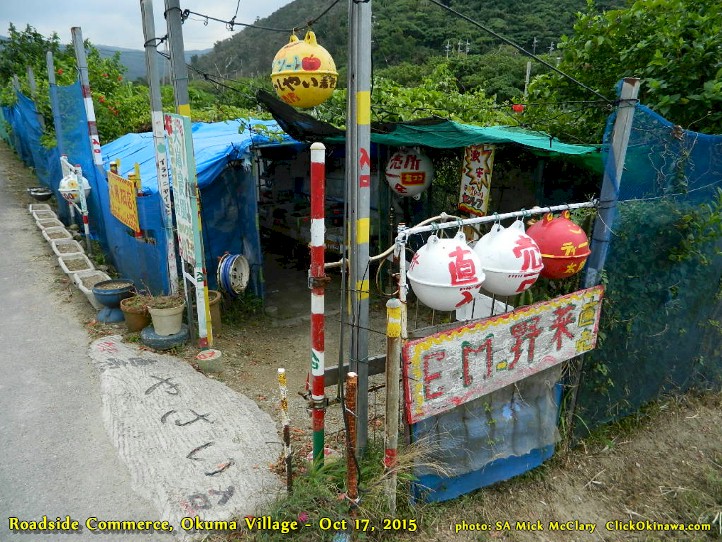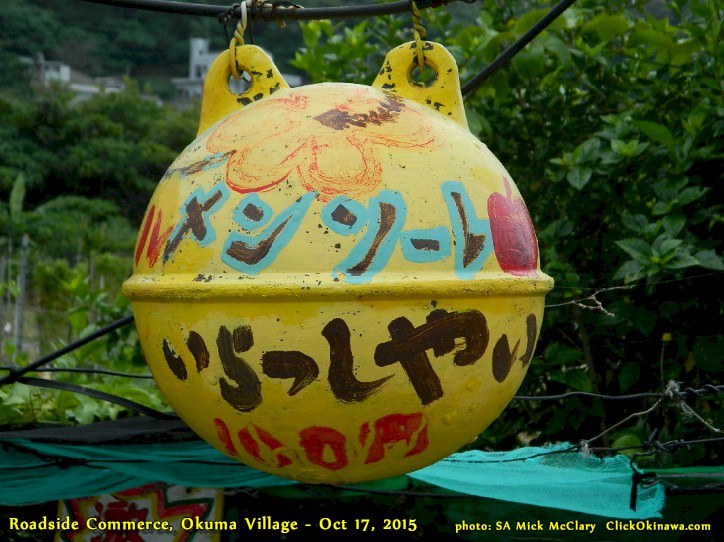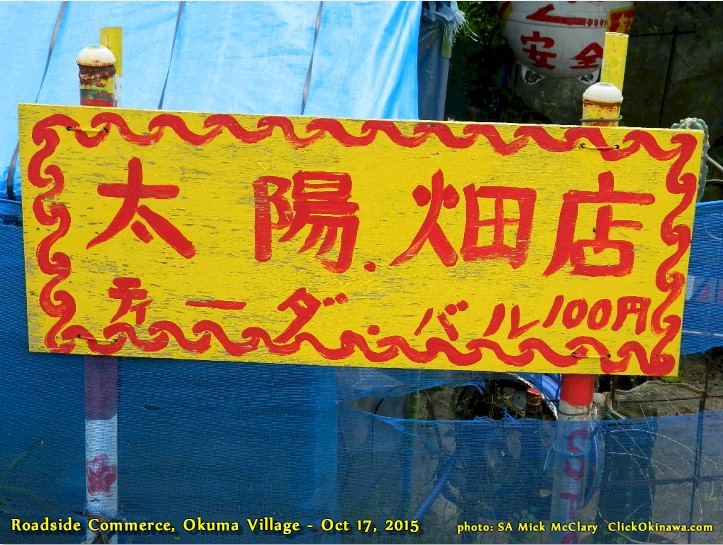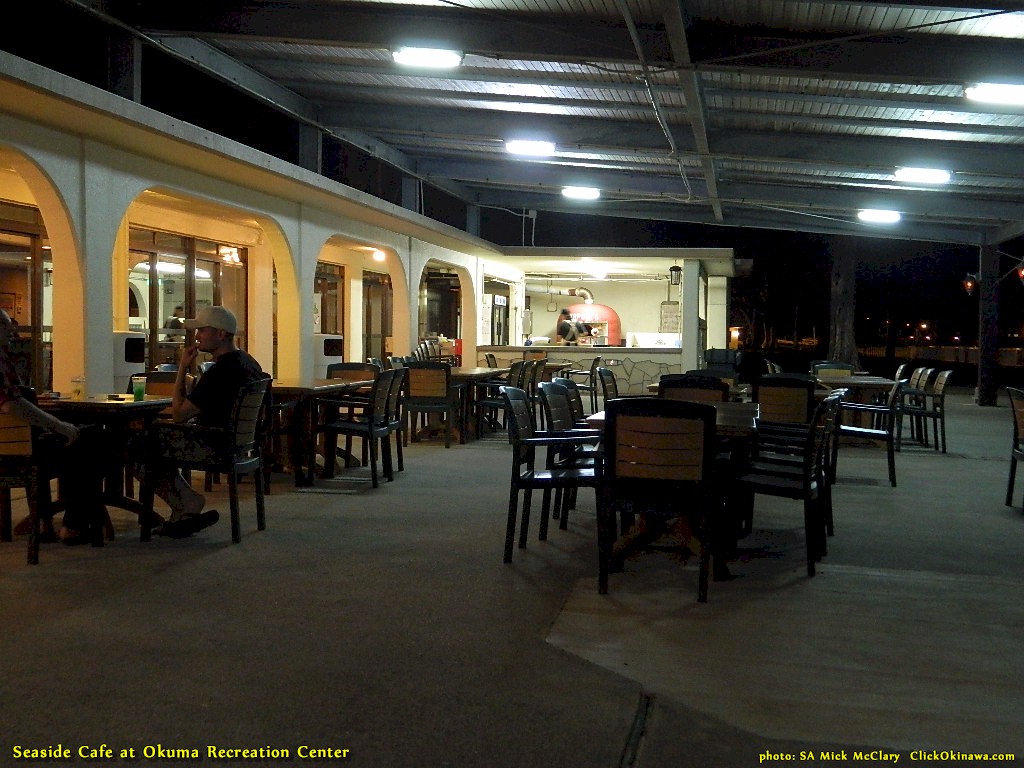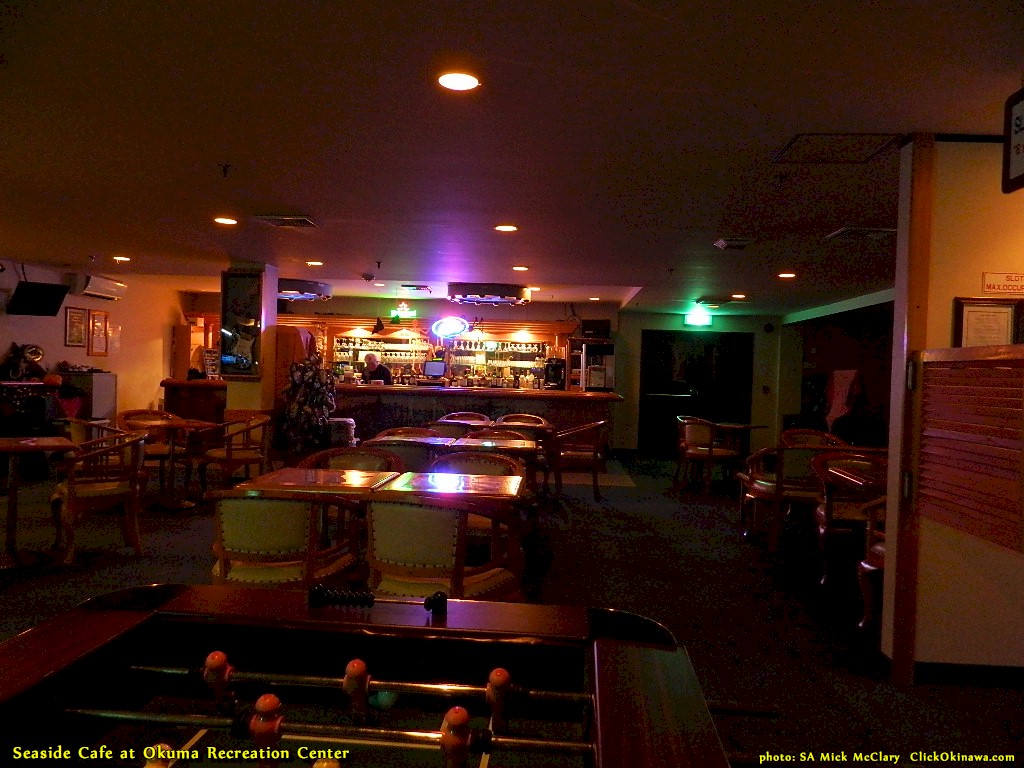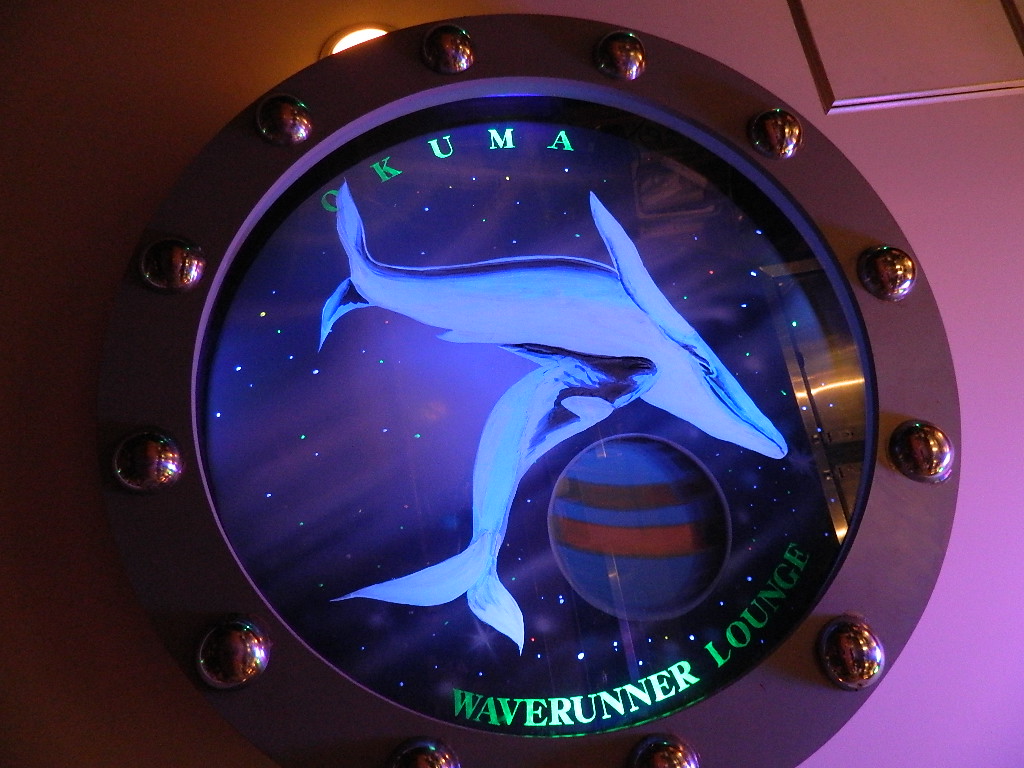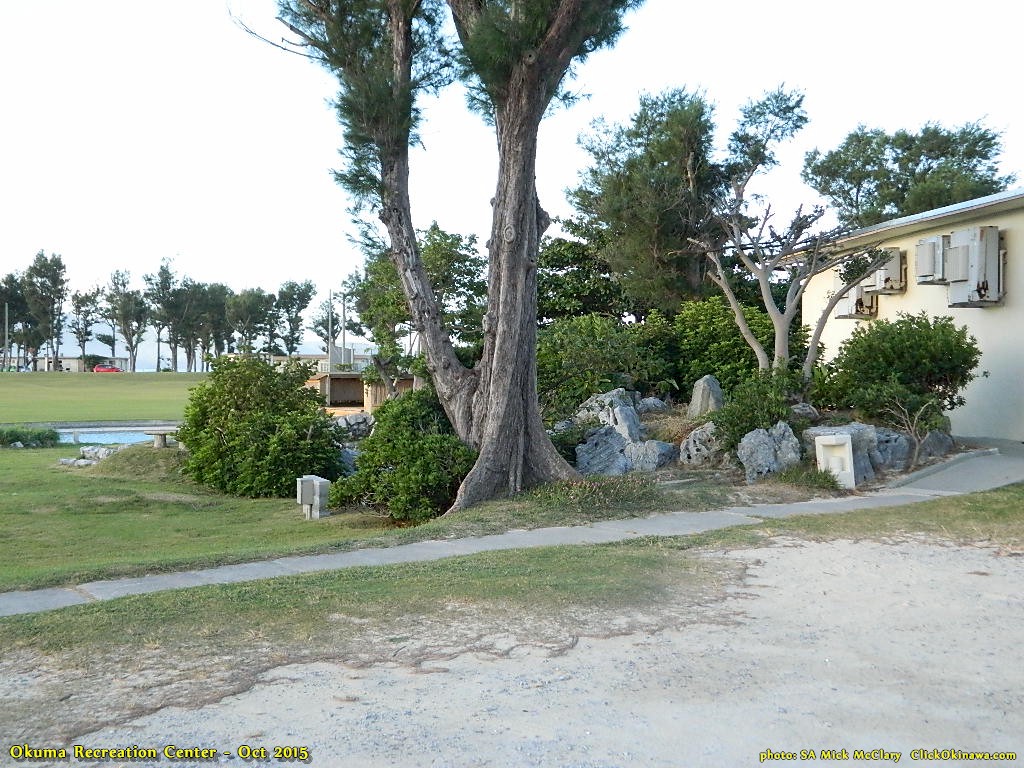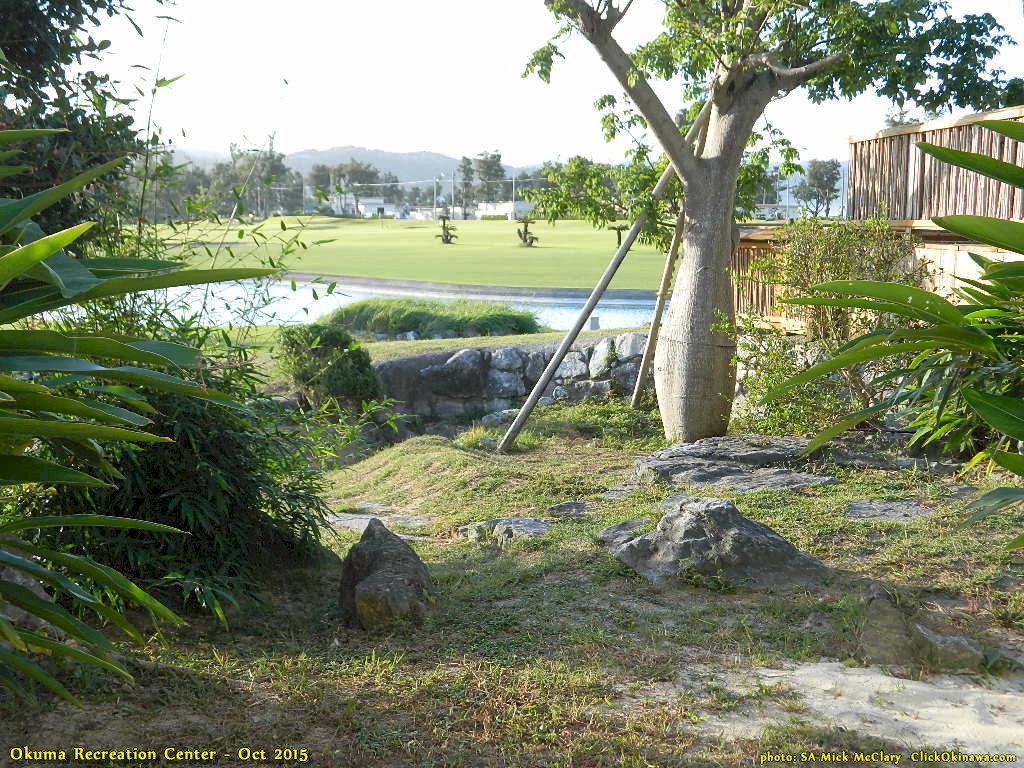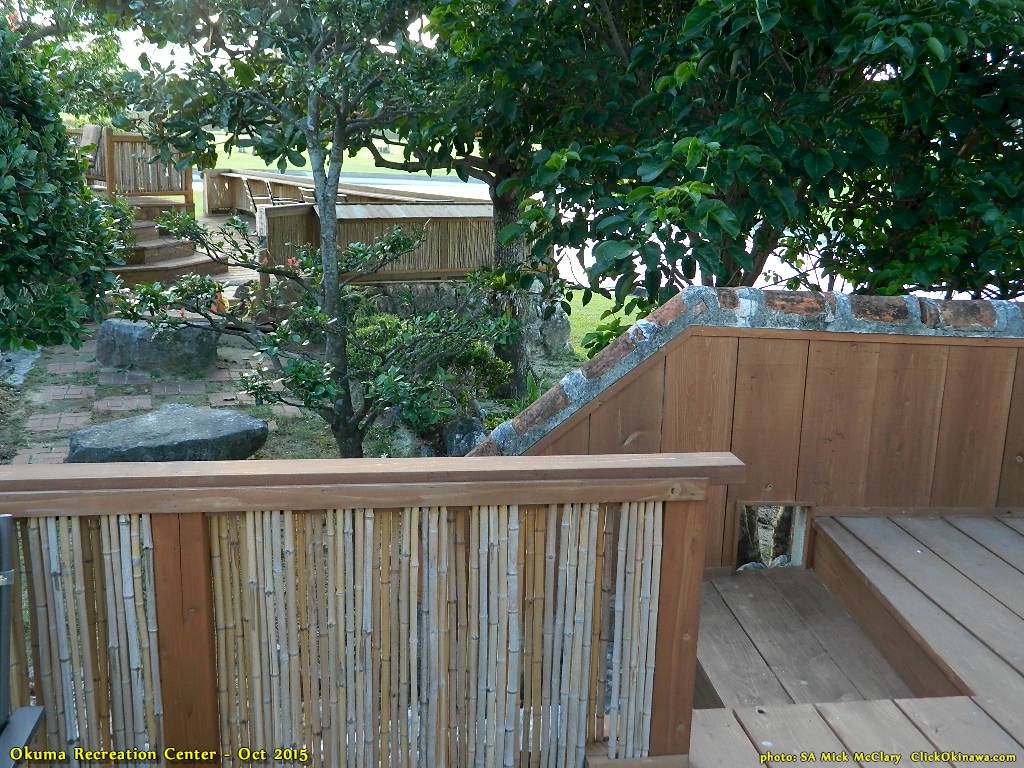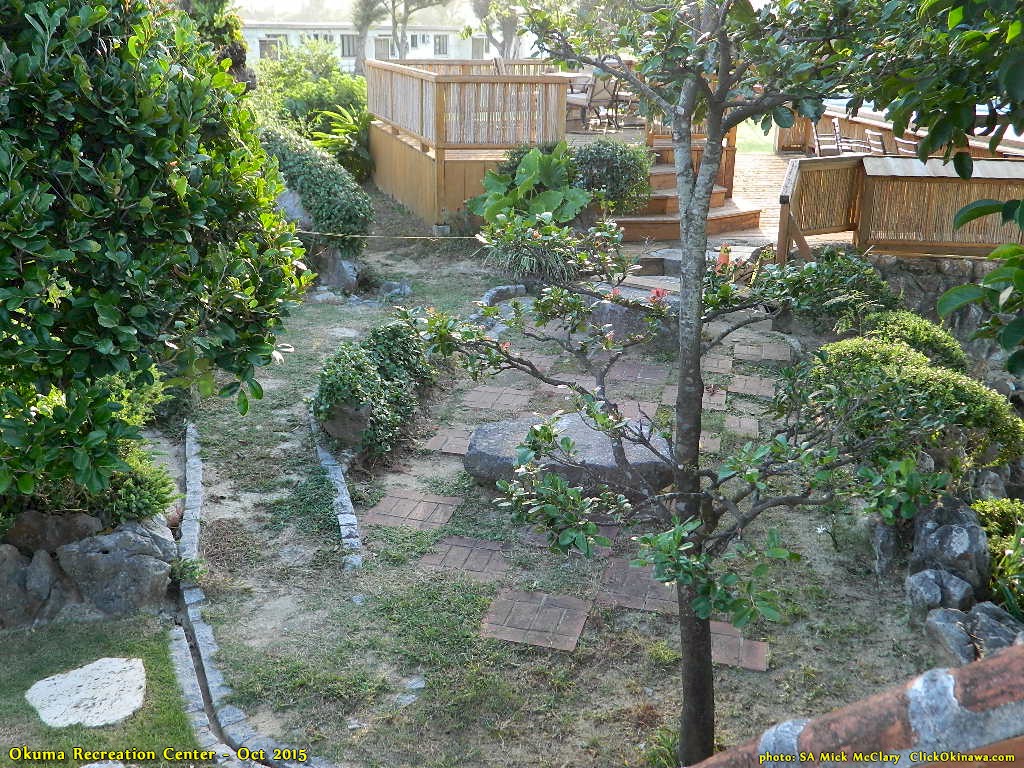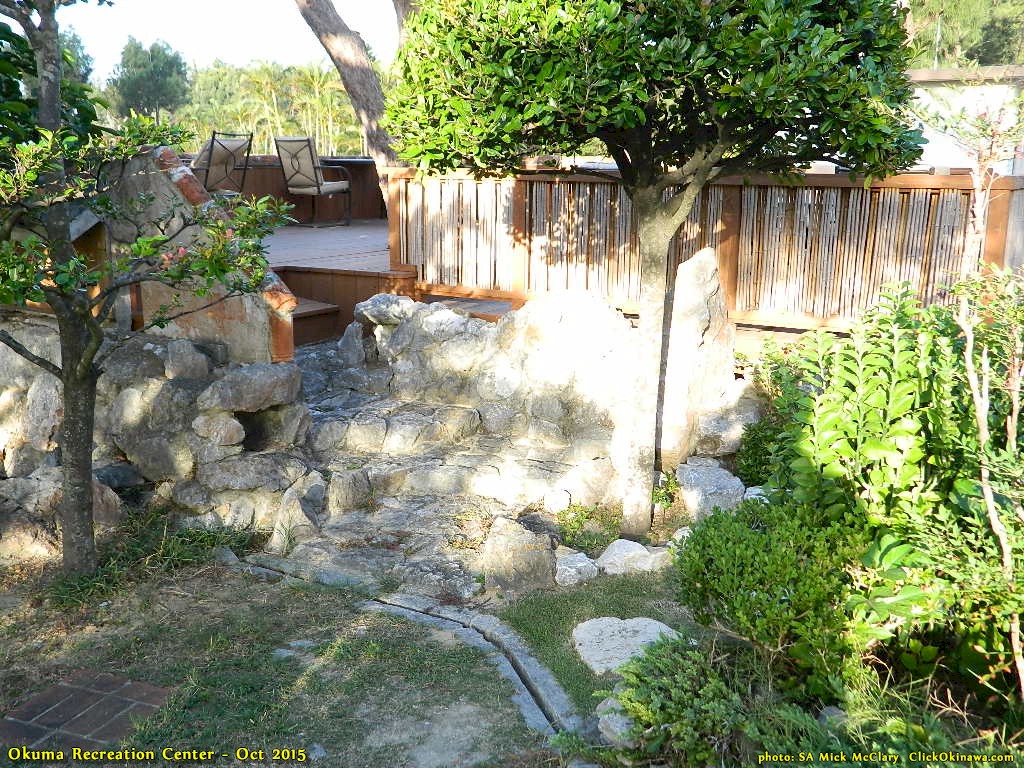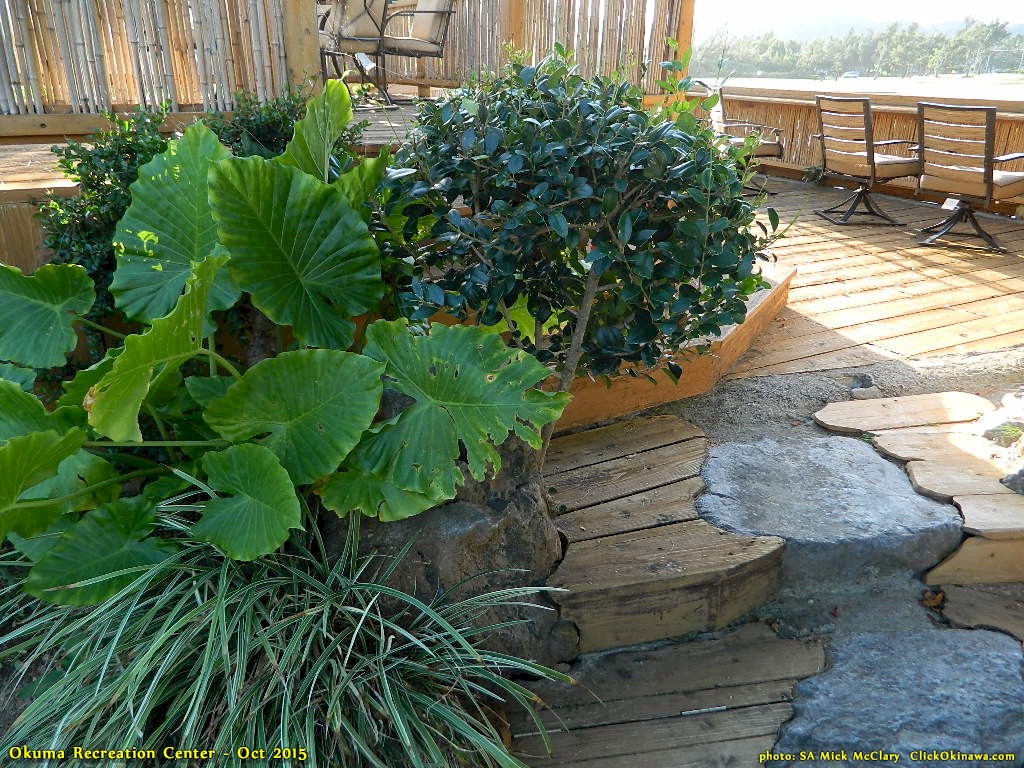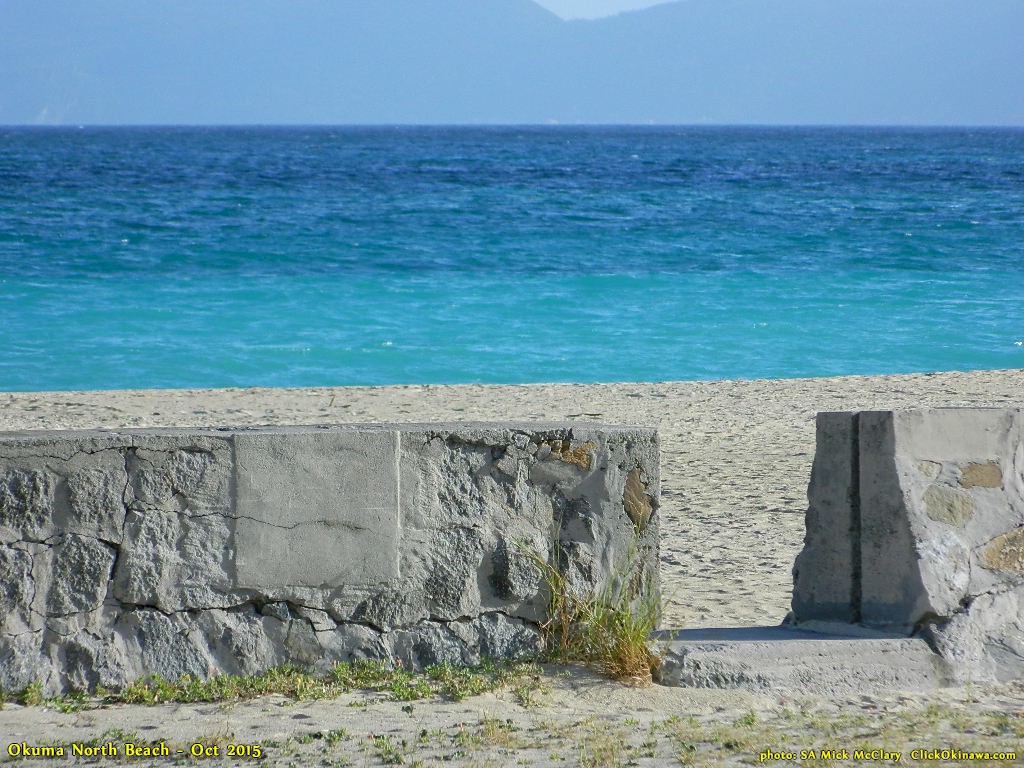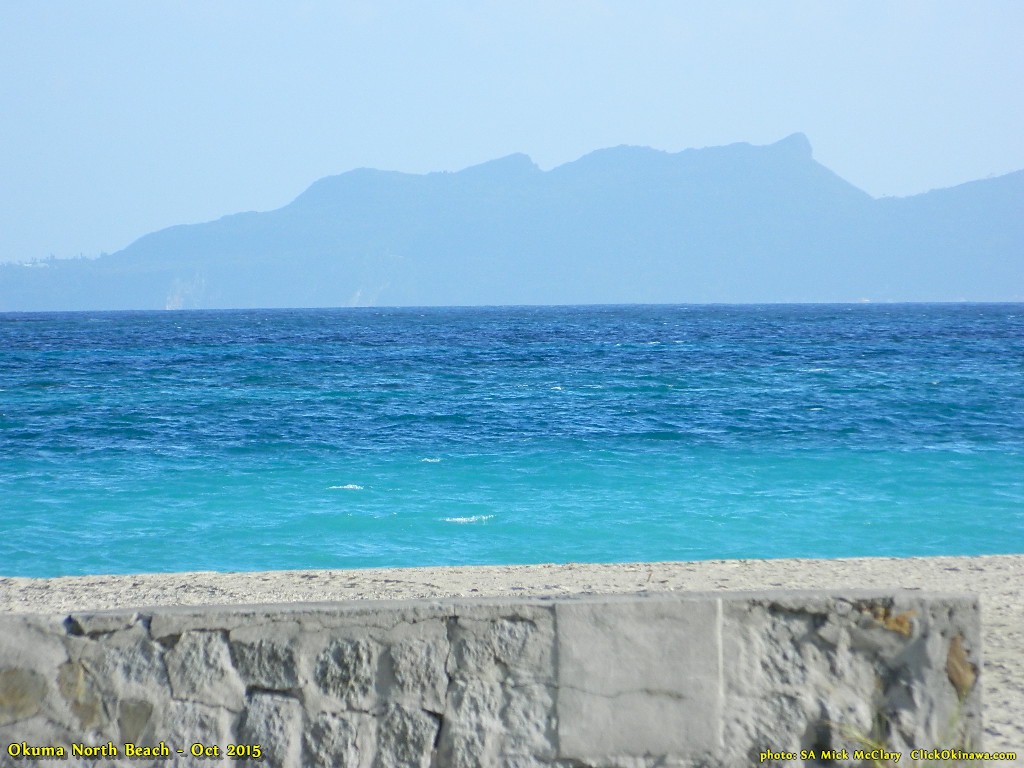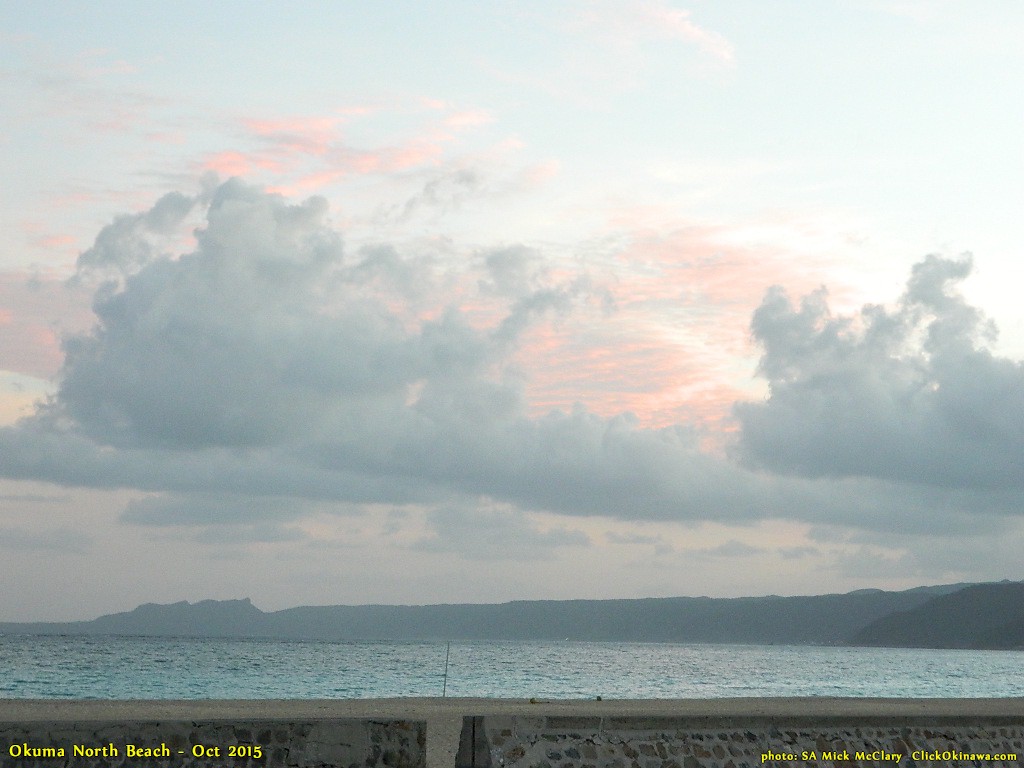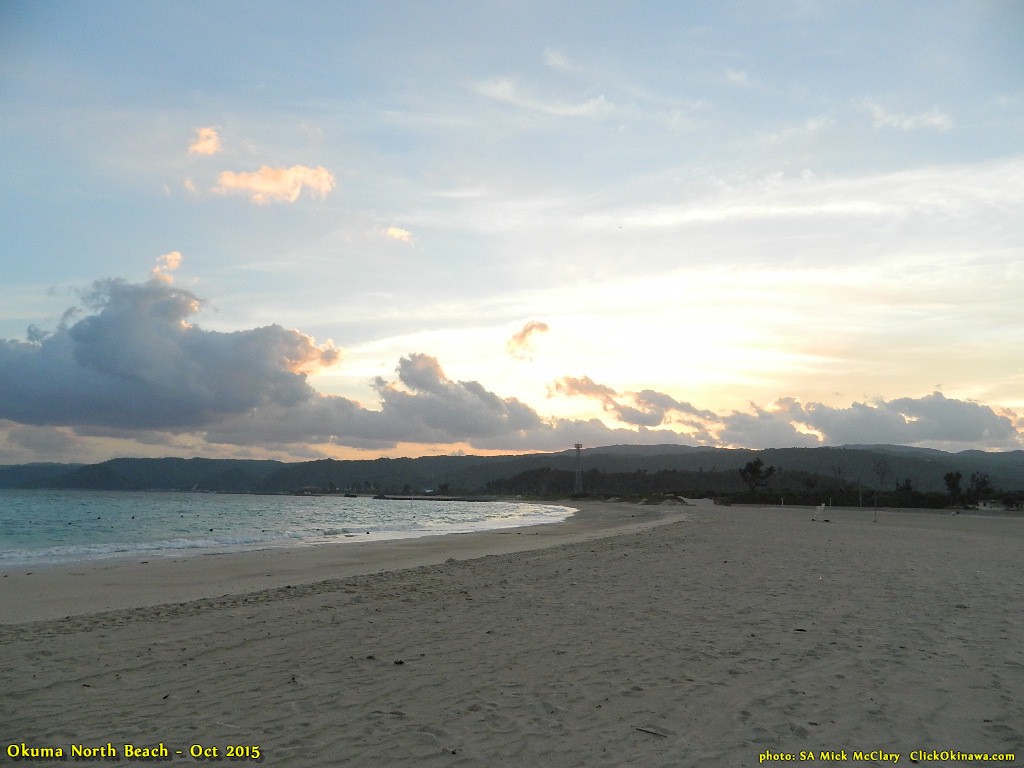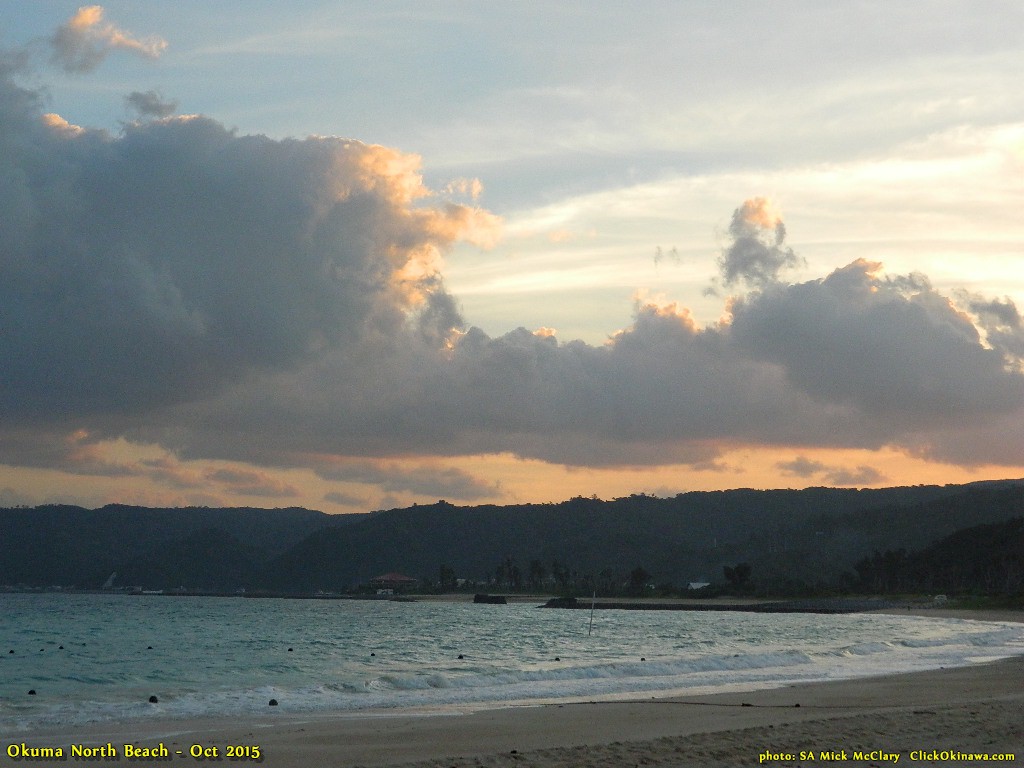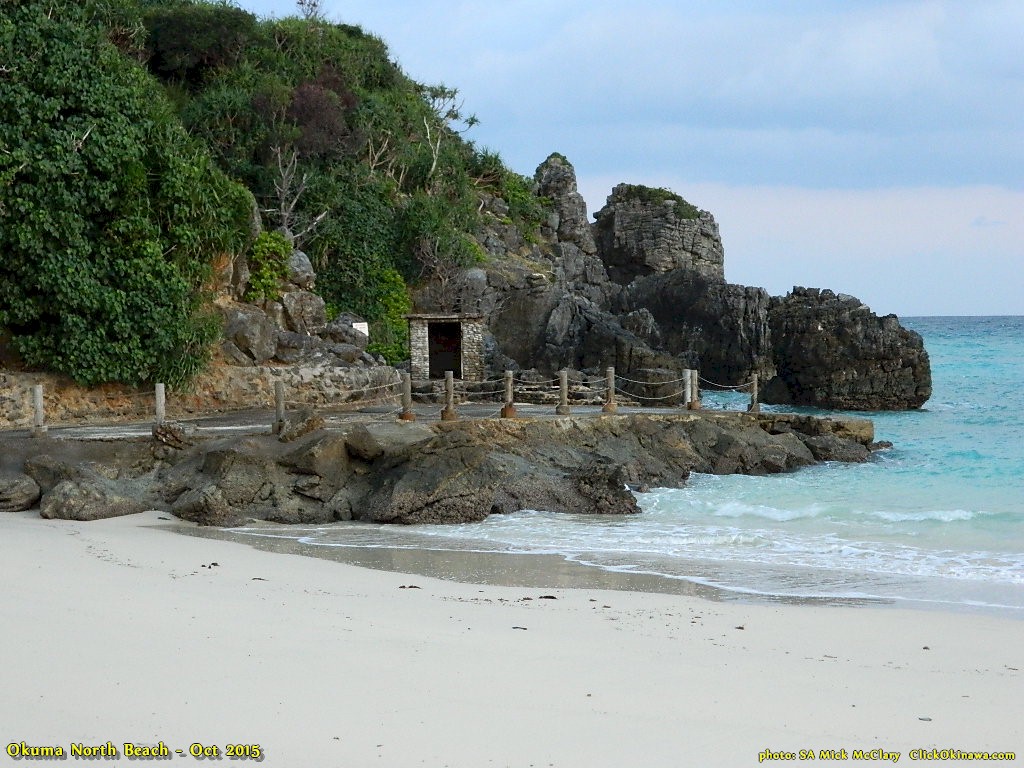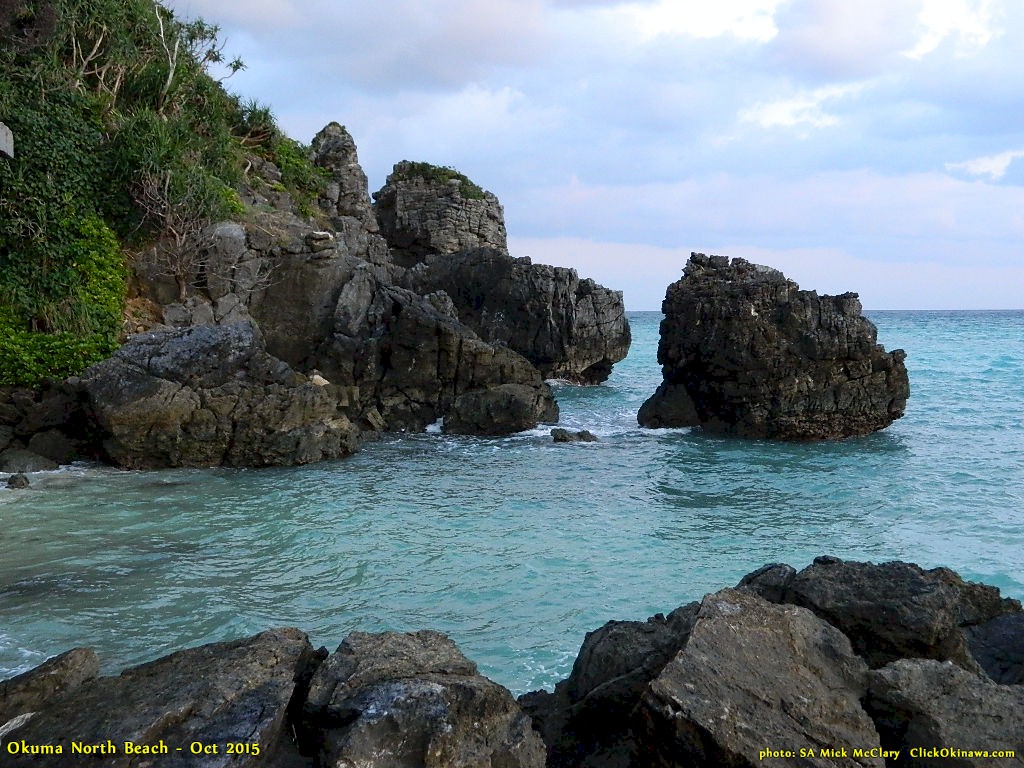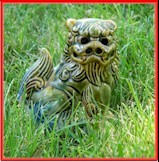  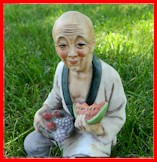  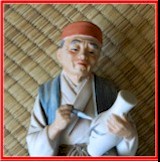                                  |
After having been away from the island on which he was born (in 1975) since 1990, my younger son, Zac, accompanied me this year to Okinawa. We landed at Naha Int'l October 16th, spent the night on Senaga Island then the next morning we picked up our rental and headed north. Okuma was high on our "wish list" so we made that our second point of order. Ride along with us as we work our way up Highway 58 (National Rte 58)
NOTE: Ignore the 2013/01/01 date stamp on the video. This was October 17, 2015
So, after having been away from Okuma for about 25 years and not even seeing the huge sign with O-K-U-M-A on it I drove right past it! Doh! In my defense, I was watching the overhead signs. Yeah, I know. Anyway, we got in late on the 17th, walked around the camp for a while getting accustomed to the facilities and were pleased to find a Shopette, a recreation rental store, a nice restaurant and watering hole. Neither of us golf, so...
HOW DID OKUMA COME TO EXIST? It all came about as a result of a duck hunting trip in 1947 between General Fred Hayden, Lieutenant Colonel Arch McGee, and a personable Okinawan named Shinzo. At the end of the day the general looked over the area, part of which was farmed in sweet potatoes, and said, "Mac, you've got a lot of imagination. Let's see you build a rest center here." "How much money?" asked McGee. "None." replied General Hayden and with that McGee was on his way. Seven elderly Okinawan farmers owned the site and were queried as to how much they would charge for rent. The equivalent of forty dollars per farm was the amount decided. However, to make sure that the farmers got a fair deal, McGee dug into his own pocket and made it fifty dollars each. The area was cleared with the help of Mr. Matsuoka who furnished a bulldozer and operators from the Okinawa Public Works, free of charge. The Okinawans insisted that walpai (tall grass) be burned due to many habu snakes in the area. After burning the walpai they found the charred remains of 163 habu. The fact that the farmers had been paid for their land proved to be a tremendous asset because this pleased the town mayors. They got together and guaranteed a plentiful labor supply for construction. This was particularly significant because carpenters were scarce and in high demand. Contracting firms offered the workers all kinds of incentives encouraging them to work on mainland Japan, but the workers stoutly refused to leave the Okuma project. Hentona High School students volunteered their time to clean the grounds once each week. Since they had no architect, McGee designed Okuma himself. Building materials were procured in a variety of "strange" ways. Broken bags of wet cement were processed and weather-worn, crooked pine was scrounged from the Army depot for flooring. After fashioning planes from old Jeep springs and wooden blocks, the carpenters planed and grooved the old wood. They also made parquet flooring from damaged Japanese oak doors. The citizens of Naha donated tile flooring and watercrafts. Since lumber was not available for the framework, the industrious builders ripped apart old bailey bridges by hand, then mortised and notched them since they didn't have nails. Paneling came from old masonite crates that were then painted with paint procured during a "midnight requisition" from the U. S. Navy. A Japnese style dining room with panels of wood was stained with a combination of brick and gasoline and turned into a game room. Condemned "out houses" were refurbished and converted by the ingenius Okinawan laborers into bathrooms. Reconditioned Japanese Army generators furnished the electricity. Water was pumped into Okuma from a fresh spring using a one cylinder putt-putt engine. It was then stored in a home-made water tank. When the original Okuma site was completed in early November of that year, a group of Buddhist priests gathered on the site with many symbols and a five gallon can of sake, all of which had been buried at Shuri during the war. A sack of charcoal and rice was suspended from the rafters to guarantee that the entrants would never be cold or hungry. Streamers bearing lions and tigers were flown from the roof. The roof was also guarded by Shisa dogs to ensure that the priests, workers, and guests would be protected from evil spirits. To celebrate their success, they proceeded to drink all of the sake as they danced and chanted all night.
The same spirit of cooperation and celebration still exists at Okuma today, but we have definitely improved! Okuma currently occupies 135 acres and has over 50 facilities. The staff of approximately 120 people consists of active duty Air Force, local nationals, and NAF (non-appropriated funds) civilians.
We went "off base" to take a look around the village. My favorite find along the way was this little roadside stand. Nobody around, but there it was with stuff on display including an "Open" sign. I would later encounter a very similar situation at a roadside vendor near the Zakimi-jo in Yomitan - but that's another story...
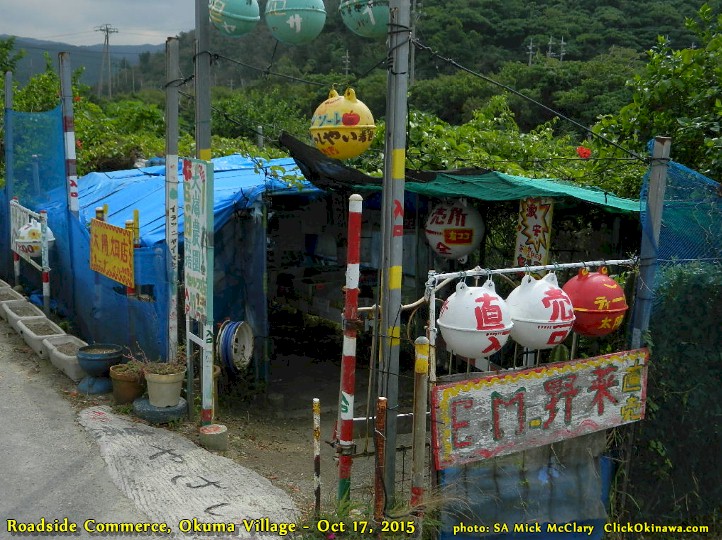
I have since learned that such unattended roadside stands are not at all unusual. Throughout Okinawa-jima and other outlying islands one may and usually does find small vegetable stands along the road. I don't know what the rate of trust and compliance is on Okinawa but I read that such stands in and around the Tokyo area have a 80-90% rate of successful collections - meaning that 10-20% is lost to theft. Some farmers have opted for secure locker-type vending machine set-ups which means that money must be paid in order to access the veggies. The drawback though is that many people don't like to buy fruits and vegetables without first being able to handle the merchandise. Anyway, it explains this roadside attraction along the road to Okuma.
Back at the rest center we settled in for the evening, stopping in at the Seaside Cafe where there is a nice dining room and, better yet, a large outdoor patio with steaks on the grill at the far end.
A cool feature in the lounge is this ceiling light. I want one! Lots of attractive features throughout the compound make it a very pleasant and relaxing place to recharge your batteries!
Yuimaru Garden, overlooking the tee at Habu Links golf course
And then... there are the beaches! North and South - take your pick.
Okay... now sit back and enjoy some tranquil beaches!
1996-2015 ClickOkinawa.com |
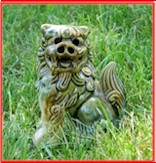  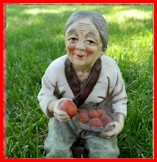  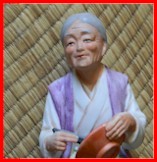                                  |

